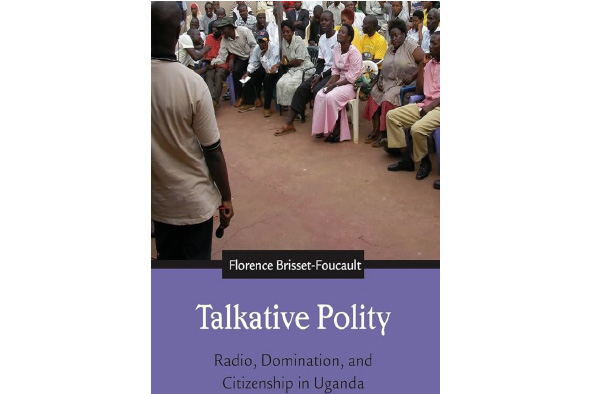Prime
Book Review: Before the advent of social media, there were bimeeza

What you need to know:
- Book Title: Talkative Polity: Radio, Domination, and Citizenship in Uganda
- Author: Florence Brisset-Foucault
- Year of Publication: 2019
- Pages: 249
- Price: Shs50,000
- Where: Uganda Museum bookshop
It is hard to talk about the period that spanned from 2000 to 2009 without mentioning the “bimeeza”. Long before social media gained the traction it now has on Uganda’s political scene, the three most prominent bimeeza—CBS’s Mambo Bado, Radio Simba’s Simbawo Akatii, and Radio One’s Ekimeeza—were all the rage.
Some of the most noticeable names on Uganda’s political scene today cut their teeth on bimeeza. Think Betty Kamya, Tamale Mirundi, Frank Tumwebaze, Nobert Mao, and Odonga Otto. President Museveni himself attended at least one session of CBS’s kimeeza.
The prominence of bimeeza prompted the government to ban them. In Talkative Polity, Brisset-Foucault, a lecturer in Political Science at the University of Paris 1 Panthéon-Sorbonne and a member of the institut des mondes africains in Paris traces the history of bimeeza, records the kind of discussion that happened at these so-called ordinary platforms, the rules that governed them, how and why they were banned in 2009.
Contrary to what I believed initially; Brisset-Foucault’s book shows that bimeeza didn’t have humble beginnings. The first kimeeza—also called kimeeza—at Club Obbligato started as a place where some of Uganda’s topmost elite names, like renown lawyer Alan Shonubi, met and discussed issues pertinent to them. Matters were further helped by the fact that only years prior, the government had started issuance of licenses for operation of private radio stations.
Kimeeza as we know it kicked off after Radio One’s proprietor—Maria Kiwanuka—and the proprietors of club Obbligato started a live broadcast of the discussions on radio through a mobile van.
The idea was then picked up by a couple of radio stations especially in the central region. From that time, the bimeeza were the place to be: on the days they were hosted, people from different walks of life—politicians, business people, students—thronged the different venues to listen to different speakers.
Even many more – probably thousands – tuned into the different radio stations and followed as the discussions happened.
Topics ranged from elections and the choice of president to calls for accountability and Buganda’s place in contemporary politics.
With time, as the author notes, Kimeeza developed its own celebrities and was such a force to reckon with that politicians from across the political aisle trained and trained some regulars on the shows to further their political positions or promote their names.
As bimeeza grew further in prominence and became the place-to-be, many more noticed it. With the notice came praise and criticism. Some wanted the whole thing banned. Interestingly, among those that wanted bimeeza banned were its founding members who argued that the concept had lost direction, its ethos.
However, the loudest calls for a ban were those from the government, as far back as 2003, the government through Broadcasting Council (BC)—later renamed Uganda Communications Commission (UCC)—through argued that the radio licenses did allow for broadcast of bimeeza.
‘What if a radio goes to northern Uganda and relays a live broadcast of LRA’s commander Joseph?’ was the argument. In the end, Bimeeza withstood the initial storms. Until, in the aftermath of the 2009 riots, the government closed radio stations including CBS, and put a stop to Bimeeza.
In writing about Bimeeza, Brisset-Foucault goes all out to examine Ugandan culture, history, politics and how it all played out during bimeeza.
While many critical voices have harshly criticised the government for censuring speech by banning kimeeza, this book will show that it was not just the government that wanted the discussions moderated. Even regular attendants of Kimeeza did.
Some of the rules of censorship employed by the government were employed before the bimeeza, and while the argument is that the places were for the common man to put his view across, the readers will see that the “common man” was not really that common. Women for instance were barely in the audience, and seldom spoke at all.




